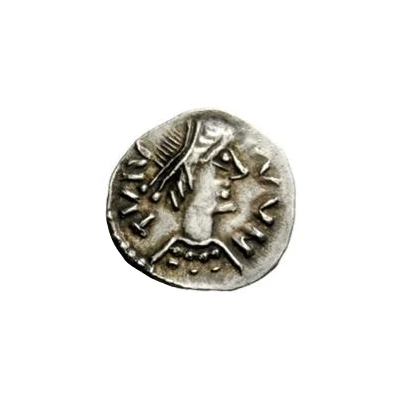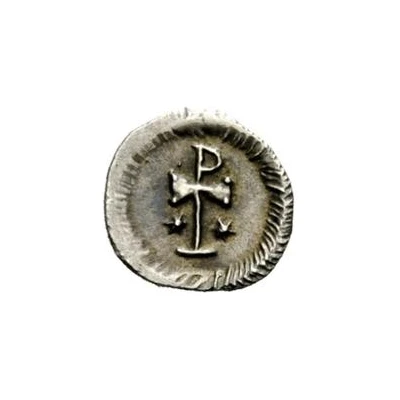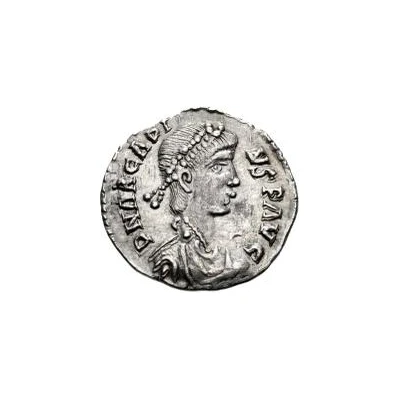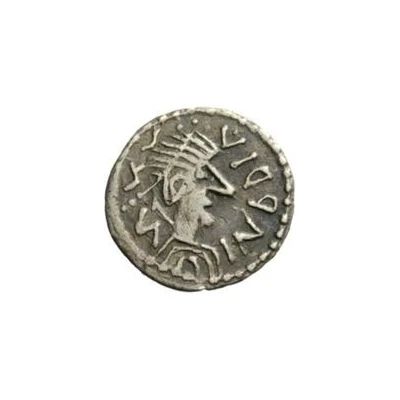
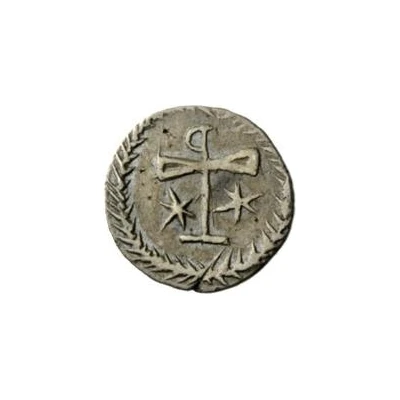

© Numismatica Ars Classica NAC AG
¼ Siliqua Retrograde staurogram
| Silver | 0.54 g | 12 mm |
| Issuer | Uncertain Germanic tribes |
|---|---|
| Type | Standard circulation coin |
| Years | 568-690 |
| Value | ¼ Siliqua = 1⁄96 Solidus |
| Currency | Solidus (circa 301-750) |
| Composition | Silver |
| Weight | 0.54 g |
| Diameter | 12 mm |
| Shape | Round (irregular) |
| Technique | Hammered |
| Demonetized | Yes |
| Updated | 2024-10-04 |
| Numista | N#145000 |
|---|---|
| Rarity index | 100% |
Reverse
Backwards and opened staurogram with a star on either side, all surrounded by a wreath.
Edge
Plain
Comment
Some sources list these as a ¼ Siliqua; others list these as a ½ Siliqua. As well, some sources list this coin as being struck in the name of Justinian I (527-565) or Justin II (565-574); however, with the legends being nonsensical, it is impossible to know which ruler this type was meant for.Because of this coin's odd style and nonsensical legend, one theory is that this piece may have been a contemporary Gepid piece imitating a real Lombardic one. Even so, while the style does resembled ones made by the Gepids, that theory is unlikely. If this piece were imitating a pseudo-imerpial siliqua piece of Lombardy, its earliest date would have been 568. With that in mind, the Kingdom of the Gepids fell in 567, meaning they would not have produced coins after that date.
With this coin most likely not being a real Lombardic piece, and with it not being a Gepid imitation, it is likely this piece was actually struck by an Uncertain Germanic Tribe.
For a more specific area, one theory suggest this is from the upper Rhine-Danube region, since that area would be familiar with the design, but unfamiliar by what the legend meant.
Interesting fact
One interesting fact about this coin is that it features a retrograde staurogram, which is a symbol that combines the Christian cross with the pagan sun wheel. This suggests that the coin's design reflects a blending of Christian and pre-Christian beliefs and practices among the Germanic tribes of the time.
